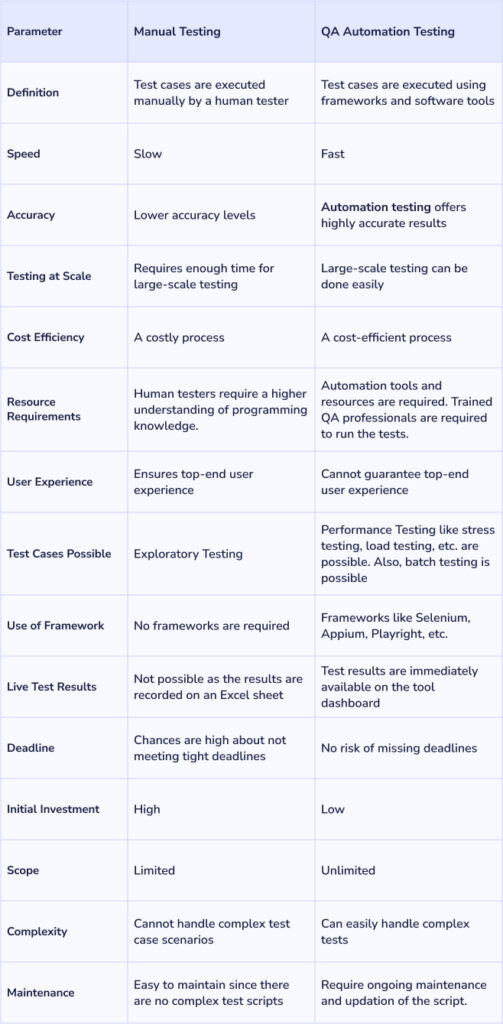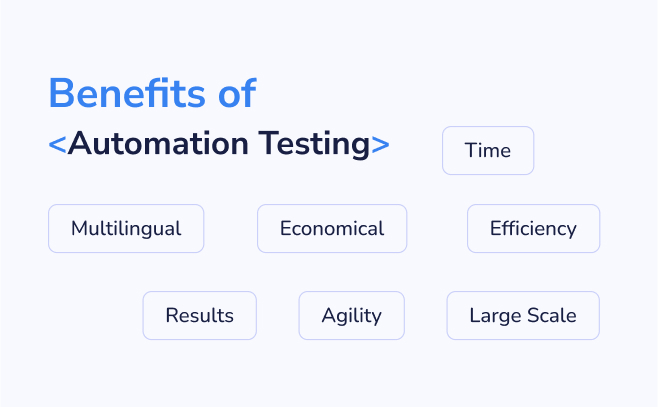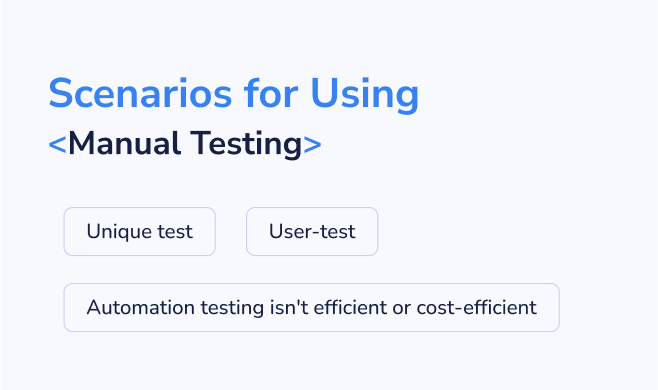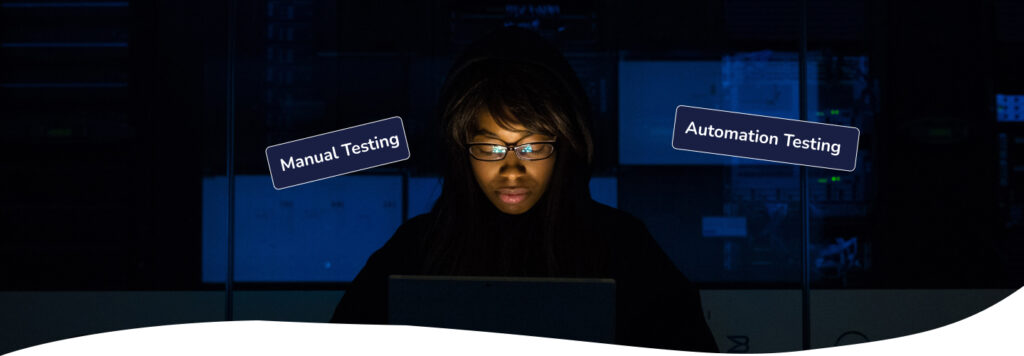<How to Choose Between Manual vs. Automation Testing?>
There has been a consistent debate about manual testing vs. automation in the QA community. Quality Analysts have two approaches in the context of testing – manual testing and automation testing. While both approaches help QA professionals traverse the uneven domain of the testing ecosystem, the manual vs. automation processes of testing have different best practices with their unique advantages and disadvantages. To top it off, each form of testing can be applied to different use cases to optimize test resources and get meaningful results.
As the name suggests, manual testing is performed by a human being and is done step by step. There are no test scripts. Automation testing specialized test automation frameworks are used for automatically testing codes. When considering manual testing vs. automation testing, the latter is faster, automating many repetitive test cases and reducing time-to-market. While automation testing is best fit for large-scale repetitive tests or regression testing, manual testing is much required in small-sized and ad hoc projects.
Let’s explore the differences between the two forms of QA testing and their applicability in this article.
Manual Testing vs Automation Testing
What is Manual Testing?
A human tester is required to execute test cases in this type of testing. The defects, inaccuracies, and discrepancies in the codes and the software are identified manually by the tester. Typically, the tester enters data, browses the menus, and clicks on buttons to make sure that the app is working as expected and meets the purpose that it has been designed to meet.
What is Automation Testing?
It is a form of testing where specialized resources, frameworks, and tools are used on test cases. The entire process is automatic and requires no human intervention. The predefined test scripts are used to test the software’s functionality, reliability, and performance. The test framework has different components and modules for automated testing.
Difference between Manual Testing and QA Automation Testing

Which is Better: Manual Testing vs. Automation?
In the race of manual testing vs. automation testing, there is always the ensuing discussion about which is better. Modern QA professionals feel that automation testing is the better choice. There are significant benefits:

- Speedier turnaround time.
- Faster time-to-market.
- It supports multiple languages.
- Repetitive tests can be executed with ease.
- It is a cost-efficient process.
- Large-scale testing is possible.
- Results are more accurate vis-a-vis manual testing.
Even though automation testing has numerous advantages over manual testing, there are specific test case scenarios where manual testing offers better results. That is why QA experts recommend choosing the right method depending on the testing scenarios.
When to Choose Manual or Automation Testing?
Scenarios for Using Manual Testing
Evidently, manual testing has its own set of pros and cons. The following scenarios are best suited for manual testing:

- Non-repetitive test case scenario.
- Investment in automation software testing is not a cost-effective option and is time-consuming.
- To evaluate an app for genuine feedback from an end user’s perspective.
Scenarios like exploratory testing, ad hoc testing, and usability testing are best suited for manual testing. Scenarios where human intuition and creativity are required demand the use of manual testing methods.
Scenarios for Using Automation Testing
- In scenarios like regression testing, where test cases need to go through repetitive executive following an update, automation testing is the perfect choice.
- Automation testing is more suitable during test cases involving cross-browsers, devices, and operating systems.
- For large-scale testing, QA automation testing is highly recommended.
How to Choose Between Manual vs. Automation Testing?
Manual testing should be prioritized when app features and behaviors need to be tested. For example, website or app usability testing and exploratory testing should always be manually carried out by human testers. On the other hand, Automation testing should be a top priority in the case of regression testing. In such tests, coverage and scalability are the top priority; hence, framework-based testing is the best option.
Choose the Best Software Testing Methodology with WeAreQA!
Manual testing offers quick hiring, fast feedback, flexibility, and cost efficiency. Yet, it’s time-consuming, relies on experienced QA testers, and may miss certain defects. Automation testing finds bugs rapidly, performs repetitive tests and allows process recording. However, it has higher costs and maintenance overheads.
If you are unsure about manual vs. automation testing, it is best to consult experts like WeAreQA. Using unique and proven frameworks, the company offers top-end automation software testing services.



